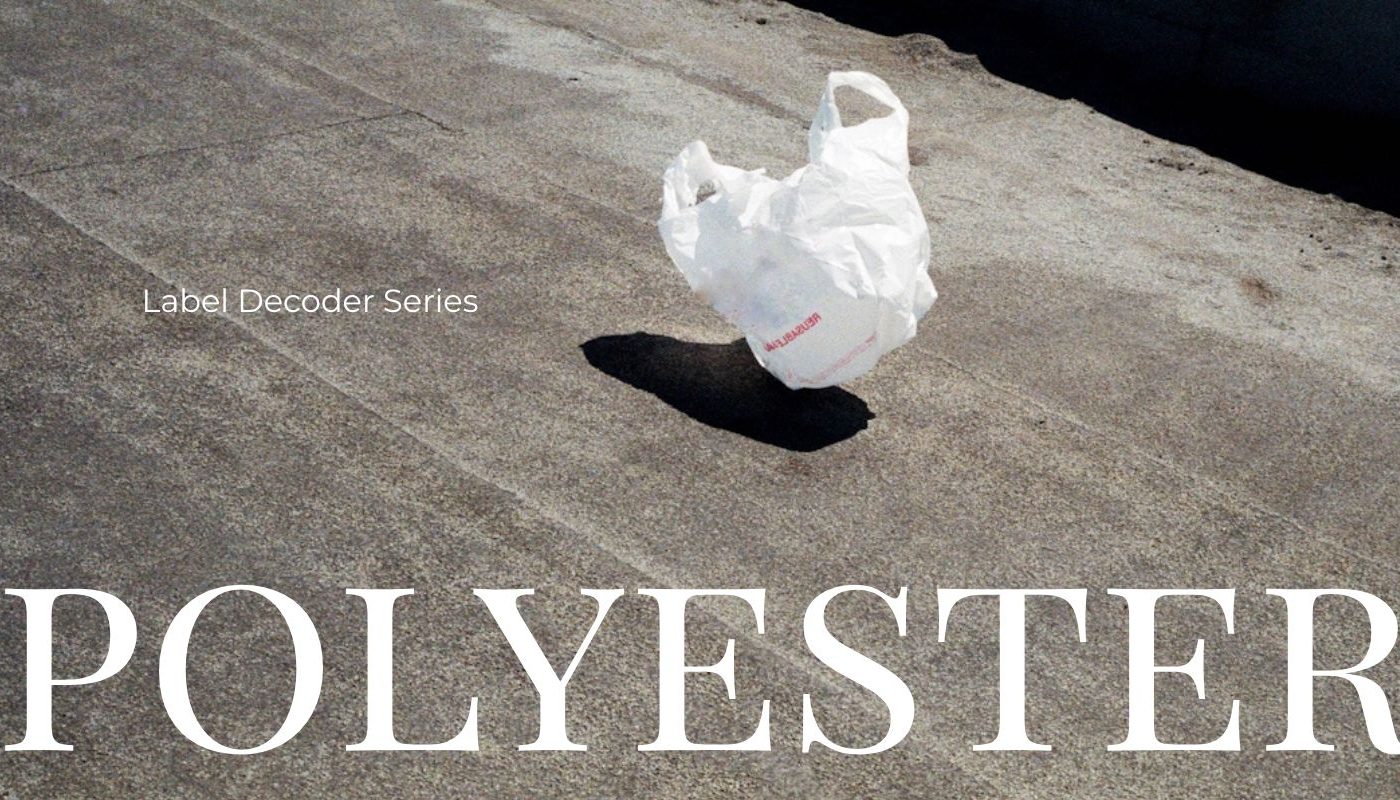Take a moment to check the label on your clothes. Chances are, you’ll see a familiar name: polyester.
It’s in everything—from stretchy gym wear to fuzzy fleeces, from fast fashion tops to luxury-brand linings. But behind its convenience lies a story many people never hear. Polyester is fashion’s favorite fabric, but it comes at a cost—one paid in fossil fuels, plastic waste, and long-term pollution.
Let’s unravel what polyester really is, how it’s made, and why it matters more than ever to understand what’s in our wardrobes.
Polyester by the Numbers: Just How Big Is It?
Each year, the global fashion industry produces over 110 million tons of textiles. And more than half of that—around 60 million tons—is polyester.
That’s enough polyester to create over 80 billion t-shirts every year. Most of it is made in China, India, and Southeast Asia, where energy is cheaper and environmental regulations are often weaker. The demand keeps rising because polyester is inexpensive, durable, wrinkle-resistant, and easy to blend with other fibers.

But here’s the twist: the same plastic used to make polyester is also used to make disposable water bottles. In fact, it’s the exact same material—PET (polyethylene terephthalate). The fabric that clings to your skin is made from the same stuff we’re told not to drink from too often, and definitely not to throw in the ocean.
Polyester is everywhere because it’s functional. But it’s also part of a system that’s built for speed, not sustainability—driven by fossil fuels and leaving behind plastic waste that won’t break down for hundreds of years.
The next time you pick up a polyester piece, you’re not just holding a shirt. You’re holding part of a much bigger story—one that quietly connects your closet to oil rigs, bottle factories, and oceans.
How Is Polyester Made?
Unlike cotton or wool, polyester doesn’t come from a farm—it comes from a factory. In fact, it starts as something you’d never associate with clothing: crude oil. The same fossil fuel used to power cars and make plastic bottles is also turned into polyester threads.

So when you pull on a fleece hoodie or stretchy leggings, you’re technically wearing a form of plastic.
That plastic is melted down, spun into fibers, dyed, and treated with chemicals to make it soft, durable, and ready for fashion. It may feel light on your body—but behind the scenes, the process is heavy on energy use, creates pollution, and relies entirely on non-renewable resources.
And once polyester clothes are made? They don’t just disappear when we’re done with them. Because they’re plastic, they don’t biodegrade—they just break down into smaller and smaller pieces, staying in our environment for hundreds of years.
It’s easy to forget all this when you’re shopping. After all, polyester can feel soft, perform well, and cost less. But it’s worth knowing that the story behind your clothes doesn’t start in a field—it starts deep underground, with oil.
What About Other Synthetic Fibers?
Just like no two T-shirts are the same, not all synthetics are created equal.
Polyester might dominate your wardrobe, but it’s only one member of a much larger family of man-made fibers. Over the past century, the fashion industry has turned to these oil-based materials to meet a range of needs: nylon for strength and stretch, acrylic for warmth, elastane for flexibility. They’re designed for performance, but not always for comfort—or for your skin.
Most synthetic fabrics are not breathable, which means they can trap heat, moisture, and odor. Some are even treated with chemical finishes to make them water-resistant, wrinkle-free, or stain-repellent—features that might be convenient, but can come at a cost. These treatments, combined with the plastic-like structure of synthetic fibers, may irritate sensitive skin and raise questions about long-term exposure, especially when worn tight to the body or during physical activity.
At their core, these fibers are made from the same materials as plastic packaging: fossil fuels. They don’t just come with a heavy environmental price—they can also feel uncomfortable to wear, especially in warm or humid conditions.
The chart below helps make sense of the main players in the synthetic fabric world—how they differ from polyester, how they feel, and what they cost. Because understanding what you’re wearing isn’t just about sustainability—it’s about how it affects your body too.
Why Synthetic Fibers Are Problematic: The Microplastic Issue
One of the most urgent concerns with synthetic fabrics—especially polyester—is that they shed microplastic fibers when washed. These are tiny strands of plastic, too small to see, that wash down the drain and slip through wastewater filters.
Here’s what happens next:

Microplastics have been found in seafood, drinking water, table salt, and even human blood. Every time we do laundry, we unintentionally add to this invisible pollution problem.

What You Can Do as a Shopper
It’s easy to feel helpless in the face of such a big issue—but your decisions really do make a difference. Here are a few practical steps you can take today:
1. Read clothing labels closely.
If something is made from 100% polyester, acrylic, or nylon, know that it’s plastic. If it says “recycled,” look for a certification like GRS (Global Recycled Standard) to make sure it’s not just a marketing buzzword.
2. Buy fewer items, but better ones.
One high-quality item you wear for years is far more sustainable than ten cheap ones you wear once. Choose timeless designs, strong stitching, and fabrics that hold up well over time.
3. Choose natural or circular fibers when possible.
Look for clothes made from organic cotton, TENCEL™, hemp, or certified wool. These materials are biodegradable and often produced under more responsible systems.
4. Reduce microplastic shedding.
Wash synthetic clothes less often and use a microfiber-catching bag like Guppyfriend, or install a washing machine filter. These simple tools can reduce your microfiber pollution by up to 90%.
5. Support brands that prioritize real sustainability.
Some companies are working on textile-to-textile recycling, designing clothes that are easier to recycle, or committing to smaller, more transparent collections. Choose them when you can.
Final Thought
Still, small choices matter. Check the label. Buy less, wear more. Stay curious.
What’s the last item you bought without checking the fabric label?
Tell me in the comments
Catch up on previous posts—from the truth about “natural” fabrics to how to read labels like a pro.
Cotton Decoded: What Your Clothes Are Really Made Of
Not All Plant-Based Fabrics Are Sustainable—Here’s Why
What Are Your Clothes Really Made Of?
And if this got you thinking, follow me on Instagram @labeldecoder for more information.
Because change doesn’t start with perfect people—it starts with informed ones.

Visuals made by Midjourney, Canva &
some images used in this project are licensed from Death to Stock. All visual content remains the property of the original creators and is used under license.




